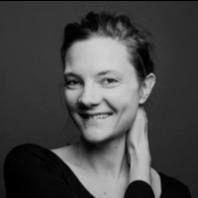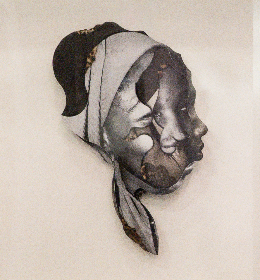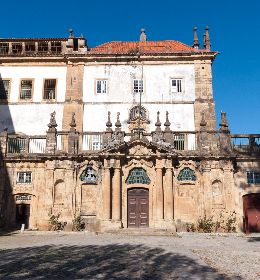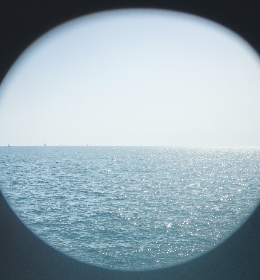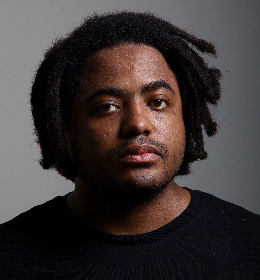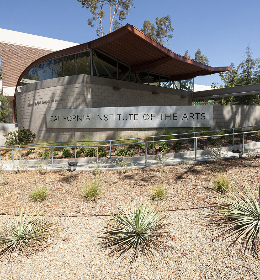For the 59th edition of the Venice Biennale, Switzerland, under the aegis of Pro Helvetia, has entrusted its pavilion to Latifa Echakhch, a French-Moroccan artist living in Switzerland. Having won the Marcel Duchamp Prize in 2013 and the Zurich Art Prize in 2015, the artist is now pursuing an international career, topping this year by representing Switzerland at the Venice Biennale, postponed for a year due to the pandemic.

For The Concert, Echakhch wanted to make the pavilion an immersive experience for the visitor-spectator, to make them feel the sensations they would have after a concert. All the senses are put to the test before entering the pavilion building, as the artist takes the viewer through a cycle of sensitive experimentation, with the orange light being the guiding thread of the experience. This colour, the artist explains, embodies the link between day and night, and is also the colour of fire, a fire that is both regenerative and destructive. Bypassing a simplistic binarity, The Concert challenges our tangible reference points to reach out to the sensitive and the invisible.
Upon arriving at the pavilion, the visitor has the feeling of coming in from the wings, of having missed the show. They come across what appears to be a Buddha sitting cross-legged, but whose upper body has been consumed by fire. The gravel around it bears the black marks of combustion. Fire, like the colour orange, is the second thread running through The Concert. In a universal cycle in which day gives way to night, the artist also evokes the bonfire rituals found in many cultures (Midsummer fires marking the arrival of summer on the day of the summer solstice; the Böögg burnt in Zurich at springtime).
In reverse, the visitor experiences what has been and is no longer, but is about to be reborn. Following the remains of monumental wooden sculptures that were partly burnt down, they arrive in the main space, in the heart of the Concert. Here, the light moves, dances, exciting our senses. The monumental figures are to be experienced between light and shadow.

With the help of Alexandre Babel (composer, percussionist and curator) and Francesco Stocchi (curator of modern and contemporary art at the Boijmans Van Beuningen), Latifa Echakhch guides us to the heart of the Music.
Interview with Latifa Echakhch at the opening of her pavilion in the Giardini.
You invite the viewer to reconnect with their innermost being through a radically immersive experience. In a desire to be a total work of art, The Concert can be disconcerting because we have lost the habit of being so confronted with our senses.
Yes, that is exactly what it is. It's the idea that it's a form of minimalism. When you reduce everything to its minimum, what is left? What is left of a concert when you take away the sound? What is left of a sculpture when you destroy it? What is there at the end? This reduction, this minimalism reaches the point where we try to ask to ourselves "what is left?". What is left is perhaps this common space between music and the visual arts, there is still feeling. Not sentimentality. If we reduce everything to the essential, what remains is feeling, what we are talking about is feeling.

When you go into the dark followed by the light show and the big sculptures lighting up, it makes you think of going back to the cave.
Yes, we always come back to these myths: Pandora, the cave ... These are interpretations that we can have. It opens up an intention when we are locked up, when we are in the hollow and it gives us a different point of view. We'll look for the opening or the exit, we'll leave the cave, look at the outside world and that always puts us in interesting situations, it's always good to change the context to look at things differently.
In our interaction with the world, we are always alone and it challenges us to be confronted with total immersion.
Yes, that's exactly what happens during a concert. There is a whole crowd of people attending the concert of a person or a group and we are a multitude, we are all individuals but we are part of this public for the musician or the ensemble, we are part of this public and at the same time when we look at the people one by one when we are on stage, it is really a back and forth between the multitude and the individual. But when you go home and you find yourself finally, or sometimes unfortunately, alone, you become yourself again, you become one, an individual. What happens in the immediate memory, in what reverberates or echoes after a concert is what you do. Because normally people are all ears, they expect a concert and they find themselves faced with silence and there is this thing where they listen to everything as if it could be part of my exhibition. It's finding yourself when you close your eyes, you remember what you've experienced. We will fragment, we will only find fragments of memories, images, lights, etc... When we remember a sound piece, a song, we can't see it in its entirety. You can't see it from beginning to end and have each musical sequence of notes and that's what I wanted to work on as a system, how we put things together to create an interesting memory. What I was saying a bit jokingly was that a newspaper had made a mistake and told me "Latifa Echakhch has been appointed curator of the next Venice Biennale", I said "no, I'm an artist" and in the end I find myself curating the memory that people will have of my pavilion.

Immersed in the dark, in the pavilion, you are alone with yourself, like an echo to a return to the maternal womb, as if you were a foetus again and hearing the beating of the heart.
When you hear the heartbeat, there is your own and the mother's, you are not alone. It's more than that, it's a return to oneself that happens from an extremely mechanical point of view. You close your eyes and concentrate on yourself, it's very difficult. You close your eyes, there are very few moments, except in an anechoic chamber, when you suddenly hear the pulsations of your heart, of your blood flowing through your own veins. The action of the foetus is enveloped, protected, we are almost too naive with our idea of the return on oneself. This return is not the foetus. When we close our eyes, it is also our body that perceives space.
There is this idea of enigma in the end. In psychoanalysis, it is said that a work of art soothes anxiety. The Concert allows you to go back in time. It is an intimate experience even if there are other people in the pavilion.
The psychoanalytical, psychological and neurological questions in relation to these issues can be diverse depending on the angles and mechanisms used. I referred a lot to the Psychoanalysis of Fire [by Gaston Bachelard], to EMDR therapy, movement therapy, which allows us to reallocate and reload traumatic images. These are things that I have taken on board in my way of working. It's not about fixing things, it's not about appeasing. How can you say to a child who has just hurt themselves or when they see someone destroying their toy, "don't worry, everything is fine", it doesn't work. I think that we must, in a sense, and this is what I am doing with this installation, we must accept these societal and human contradictions which are war and joy, celebrations and destruction at the same time, at this moment, between us, since the dawn of time on the same things and on the same paradoxes and it is not a question of looking for the origin of, it is a question of accepting them. Humans are like that, capable of the worst horrors as well as the most beautiful things and it is this great gap and reassembling this acceptance that are important. It's only by accepting that we can settle.

What are you going to do with all the material used at the end of the pavilion (wood, gravel...)?
It's a lot of recycled material, already recycled from previous biennials, and after this exhibition, it will be recycled again. The wood will be reused, the gravel will go to the Giardini because it's the same type of gravel that is outside. It's going to go to the school of architecture, the Biennale association, which recycles and gives away material... It's part of the cycle.
Latifa Echakhch
"The Concert"
59th International Art Exhibition - La Biennale di Venezia
Swiss Pavilion, Giardini della Biennale di Venezia
Until 27 November 2022
Latifa Echakhch is represented by the galleries Dvir, kamel mennour, Kaufmann Repetto and Pace.
Installation view of The Concert by Latifa Echakhch, Swiss Pavilion at the 59th International Art Exhibition–La Biennale di Venezia, 2022. Courtesy the artist. Photo: Annik Wetter



